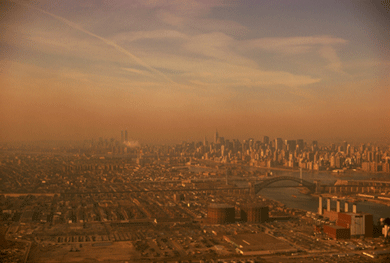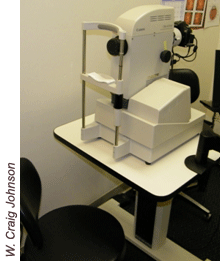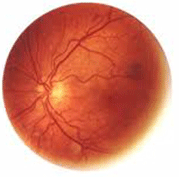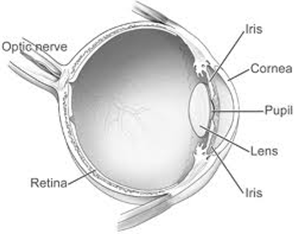News
Air pollution’s link to heart disease

Doctors
and researchers have known for a long time that smoking, high blood pressure,
high cholesterol, diabetes, being overweight, and being physically inactive
increase a person’s chances of heart disease and stroke. Common prevention and
treatment strategies include lifestyle changes (not smoking, eating a healthy diet,
and exercise) and taking medications to control cholesterol and blood pressure.
Less well known is the link between heart disease and exposure to high levels of air pollution,
especially air pollution that involves fine particulate matter (air pollution particles
having a diameter approximately 1/30th the width of a human hair). This type of air pollution
is mainly produced during combustion, such as from cars or power plants. During MESA clinical
examinations, participants completed a questionnaire and some participants allowed researchers
to visit their homes in order to take measurements of air pollution levels.
|
One of the recent major findings in MESA is the discovery of a link between air pollution,
the small blood vessels in the body, and the toll pollution may take on your heart. MESA Investigator
Dr. Sara Adar (from the University of Michigan, School of Public Health) and Dr. Joel Kaufman
(from the University of Washington, School of Public Health) studied this potential link using
photographs of MESA participants’ eyes taken as part of the eye tests during the second clinic visit.
The photos taken were of the retina, which is the light-sensitive membrane layer at the back of the
eye that contains many microscopic-sized blood vessels.
|

MESA retinal camera station

Retinal scan
|
We already know that narrowing of the heart’s arteries reduces the flow of blood that
nourishes the heart muscle, which is a cause of heart attacks, stroke, etc. It has been
found that the tiny vessels carrying blood to the eyes mimic those found in other parts of the body,
including the heart. Looking at the smaller vessels in the retinas of the eyes can give us a good idea
about what is going on in the heart, since the smaller vessels in the heart are so difficult to see.
Dr. Adar and her colleagues wanted to know if exposure to air pollution narrowed the smaller
blood vessels in our bodies. What they found was people living in areas of high air pollution
had narrower arterioles in their eyes than people living in cleaner areas. The vessels in people’s
eyes were also narrower on days with high air pollution as compared to days with low air pollution
Dr. Adar: "People with short exposures to increased levels of pollution had the blood vessels of someone
three years older and people exposed chronically to high pollution had the vessels of a person seven years
older. These changes translate to an approximate three percent increase in heart disease for a woman
living with high levels of air pollution as compared to a woman in a cleaner area."
 Dr. Adar’s and her colleagues’ work was published in the prestigious journal, PLoS Medicine
(Public Library of Science Medicine) and has had far-reaching effects since publication.
Their paper was also spotlighted on several news shows and publications such as Science Daily,
ABC Science, Medical News Today-online, Yahoo News, as well as sites as far away
as India and New Zealand.
Dr. Adar’s and her colleagues’ work was published in the prestigious journal, PLoS Medicine
(Public Library of Science Medicine) and has had far-reaching effects since publication.
Their paper was also spotlighted on several news shows and publications such as Science Daily,
ABC Science, Medical News Today-online, Yahoo News, as well as sites as far away
as India and New Zealand.
|
Dr. Adar continues, "This study suggests that living in an area with high levels of air
pollution or having brief exposures to high levels of air pollution can increase
|

Anatomy of the eye
|
your
risk of heart disease. The study shows that whether it’s a short-term or long-term
exposure, air pollution does have an effect on one’s heart."
Some things you can do to lessen your exposure to air pollution are staying
indoors during high-pollution days and using an air filter in
your home and/or at work.

A pollution source
|
Through the MESA studies on air pollution, and the help of the MESA participants,
we can expect to learn much more about the effect of
|
air pollution on the heart over the next few years.
Studies like this provide valuable
new insights into possible causes of heart disease and suggest
new ways to prevent it – by clearing the air!
Some things you can do to lessen your exposure to air pollution are staying indoors
during high-pollution days and using an air filter in your home and/or at work.
Link to Dr. Adar’s article -
www.plosmedicine.org/article/info%3Adoi%2F10.1371%2Fjournal.pmed.1000372
Sara Adar, "Tiny Blood Vessels Show Pollution, Heart Disease Link,"
Yahoo News, November 30, 2010
Sara Adar, "Photos of Tiny Blood Vessels in the Eye Link Air Pollution
to Heart Disease," Science Daily, November 30, 2010
Sara Adar, "Tiny Blood Vessels Show Pollution, Heart Disease Link,"
The Independent - online, December 03, 2010
Sara Adar, "Blood Vessels Show Pollution, Heart Disease Link,"
ABC Science, December 01, 2010
Sara Adar, "Blood Vessels in Eye Reveal Connection Between Heart
Disease and Air Pollution," Daily Tech, December 01, 2010
Sara Adar, "Heart Disease, Pollution Link Seen in Blood Vessels ,"
Arab Times - online, December 02, 2010
Sara Adar, "Link Between Heart Disease And Air Pollution," Medical News
Today - online, December 02, 2010
Sara Adar, "Photos Of Tiny Blood Vessels In The Eye Link Air Pollution
To Heart Disease," redOrbit - online, December 02, 2010
Links to Dr. Adar’s paper in selected publications:
http://www.abc.net.au/science/articles/2010/12/01/3081483.htm
http://www.dnaindia.com/health/report_tiny-blood-vessels-in-the-eye-show-pollution-heart-disease-link_1475131
http://www.downtoearth.org.in/content/retina-visuals-capture-heart
http://newstrackindia.com/newsdetails/193323
http://www.thenewage.co.za/mobi/Detail.aspx?NewsID=4684&CatID=12
http://www2.canada.com/edmontonjournal/news/story.html?id=c000226b-8311-43f0-96b0-39cf3d0bb499